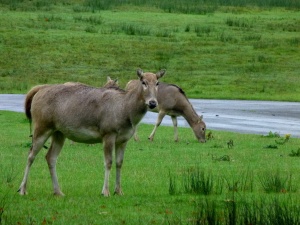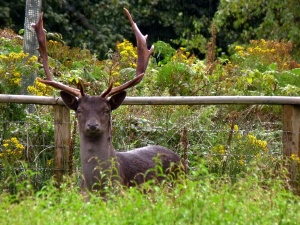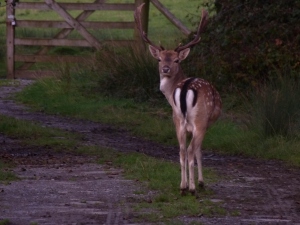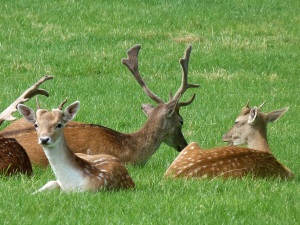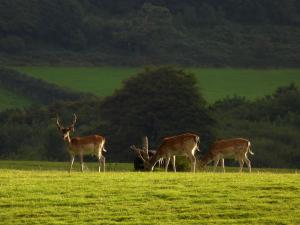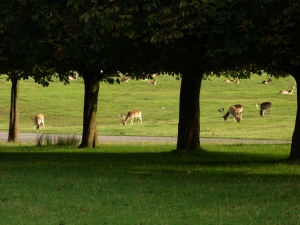So long and thanks for all the proverbial fish, Part One
Having been visited by my parents, packed up my belongings in Dorset, finished my job, had a mad couple of days getting my car fixed, and finally moved house, I have finally got to the end of a very hectic couple of weeks. Despite being so busy, I have still managed to get out and about to see some wildlife!
w/c 5th October 2015
A great start to week at the Chesil Beach Centre. Despite getting confused by Sophie’s directions to the Starry Smooth-Hound shark (Mustelus asterias) as I thought she meant the other bridge, I had a lovely wander looking at crabs and picking up litter. I also spotted my first Brent Geese (Branta bernicla) of the autumn, though they were pretending to be interior design (flying ducks anyone?).
I swapped locations and spent a few days at Lorton Meadows, managing to spot two Roe Deer (Capreolus capreolus) from the office! They can often be seen grazing in the play / picnic / pond area. Whilst a bit cautious, they spent a fair bit of time there before disappearing into other fields.
A new experience for me when our wildlife camera person came to check that the Barn Owl (Tyto alba) box and camera were still in good condition (they are), and I got to go up into the loft. Ignoring the anxious voice inside me muttering about heights, I went up and looked at the box for the first time – in which we found seven Small Tortoiseshell butterflies (Aglais urticae) hibernating!
As the name suggests, at the end of the week came the weekend! Sadly it was my last full weekend in Dorset but I made the most of it! My parents came down to see me and amongst visiting awesome places, we also went out to local restaurants and watched a sunset over the Fleet. Our first location of awesomeness was RSPB Arne Nature Reserve in the Purbeck area of Dorset. I have been meaning to visit for ages and despite a touch of chill in the day, it was fantastic – dragonflies, birds, fungi, deer and more!
The weekend wasn’t over yet though! Oh no, we also went to watch Motor X on Weymouth Beach followed by a visit to Portland Castle! Naturally, I was most interested in seeing what wildlife was about, but I did enjoy reading about the castle’s history, using their interpretation and playing (well, winning) a game of Nine Men’s Morris with my dad. The game is basically a big version of Noughts and Crosses, and was good fun to play. I am tempted to make my own set!
Crossing the bridge to see the rest of the gardens, I found a ladybird wandering around on a bush. The proceeded to find another 100+ ladybirds – some in larvae form, some as pupae and some as adults. I found three different species, but also a couple of different versions of some species. For example, the Ten-Spot Ladybird (Adalia 10-punctata) has a few possible colour variations. Flick through the photos below for the identifications, or you can look at my Twitter thread on them.
The larvae look like they are quite evil, don’t you think?
I couldn’t let my parents without taking them to Lorton of course! Neither had been before, so a late evening walk across the meadows was perfect. As well as pointing out the birds, we ate blackberries and I showed them oak galls. In the pond area I found an Elephant Hawk-Moth caterpillar (Deilephila elpenor), which was rather small so presumably one of the earlier instars (stages of being a larva). It looks like it is plotting world domination!
And the aforementioned sunset, such beauty to finish off my penultimate week in Dorset.

























































